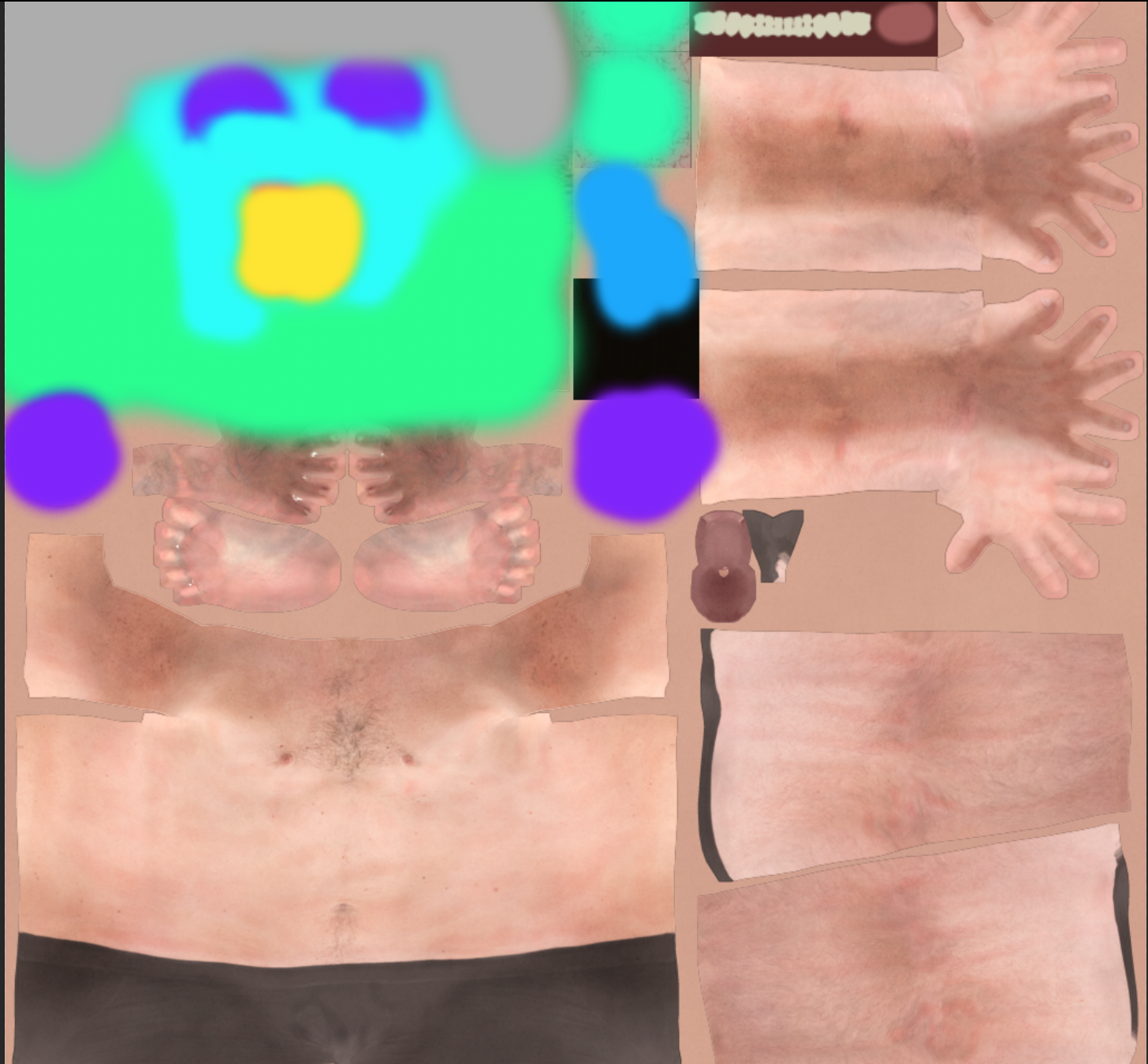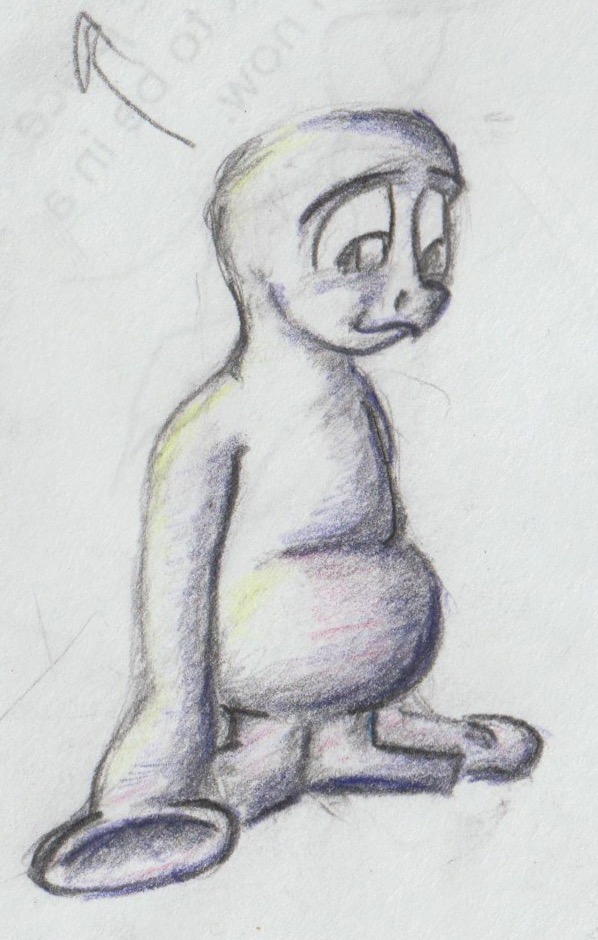This was the first project for this class that I really felt out of my depth. I haven’t used a program anything like the Unreal engine before this point, so everything we were doing here was completely new. That reality combined with the fact that I was fairly squeezed for time with finals, I knew that I wasn’t going to be able to export out a slick final project. Instead, I decided to use this time to explore some of the things about the Unreal Engine made me the most excited.
I was curious about finding ways to use the program in ways that it wasn’t exactly built for. The idea of building characters from a stock set provided by Adobe Fuse didn’t interest me too much, so I set about finding ways to make them my own. The 3-D models were stored in a format that I wasn’t familiar enough with to really play with them, but I saw that the textures wrapped around them were simple PNG files. I know how to manipulate those easily enough, so let’s see how badly we can break this thing!
I left my Wacom at home today, so any Photoshop modifications are gonna be pretty simple. Let’s see what this looks like!
Enh, ok.. but I think it can be made weirder.
That’s a nice look on him! Now let’s get him some fancy new duds…
And that’s a character!
I think it’s fitting that a class full of exciting creative ideas ends by showing us a brief peek at a program with incredible potential for future exploration. I am excited by the possibilities presented by programs like this, so I’ll definitely be taking a look at some Lynda courses for both Unreal and Maya over the break.












